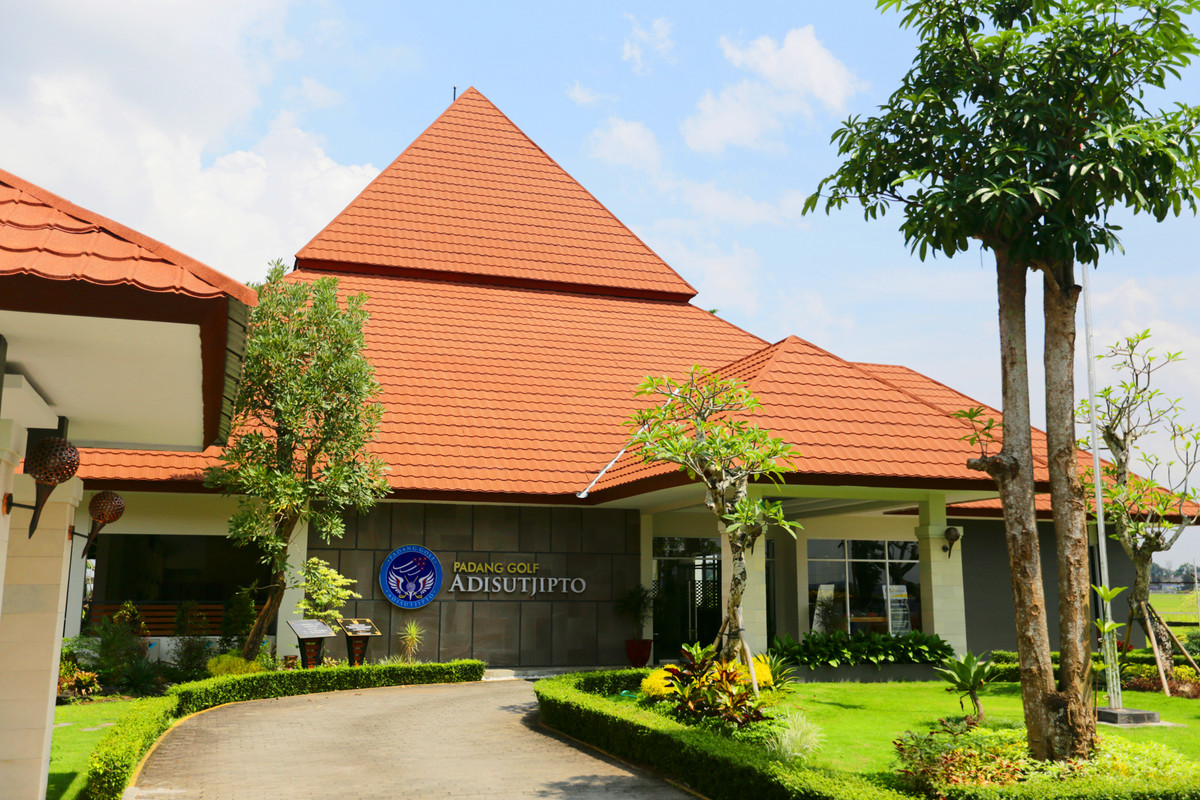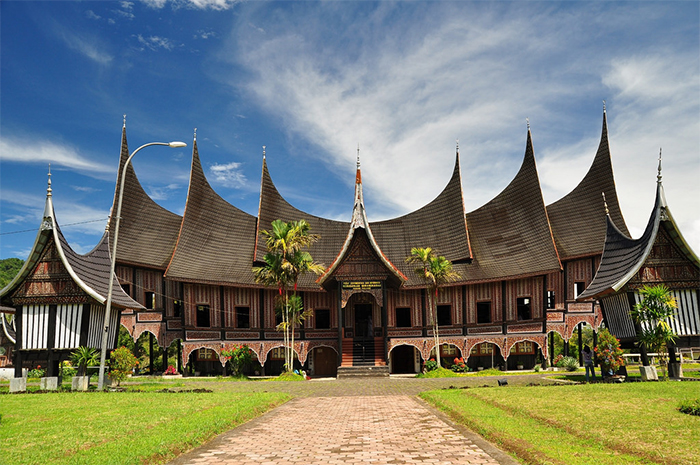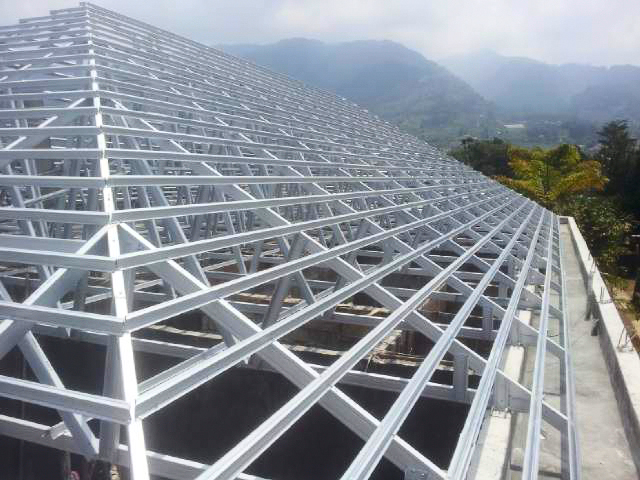Beranda > Artikel
Sheltered by a sturdy and safe roof

At first glance, the distinctive feature of a house is often seen from its top, namely the roof. The roof, as the covering of the house, adds to the building's unique value. Besides beautifying the building, it also plays a crucial role in protecting the house from wind, heat, and rain. Today, there are a wide variety of roof variations offered by property companies. From gable roofs to shield roofs, to combinations of both, it can be overwhelming to choose the right one. Although roofs come in a wide variety, you still need to be careful when choosing one. If you choose the wrong roof, your home will no longer be safe and comfortable. Especially during the rainy season, if the roof doesn't function properly, leaks can occur.
In general, leaks are caused by four things. First, not paying attention to the roof slope design. A roof should have a minimum slope of 30 degrees to allow water to drain smoothly. Do not allow the slope to exceed the minimum standard roof slope. Be careful; if the slope is greater than 30 degrees, the roof tiles will easily sag.
Second, installation errors and carelessness. Improperly installed roof tiles can create gaps in the roof that attract water during the rainy season. Installing ridge or ridge tiles with minimal cement will also encourage water seepage. Third, consider the choice of materials used. Using sheet roofing such as asbestos, fiber cement, ardex, anti-rust zinc, or bitumen (asphalt) is preferable to materials like clay tiles, concrete tiles, ceramic tiles, or wood shingles. This is because the cavities between the asbestos sheets allow for slopes of less than 30 degrees, allowing water to drain smoothly. Fourth, consider environmental factors. Continuous changes in heat and cold will cause the roof covering to wear or deform. Small cracks in the roof can allow water to seep in. The longer these are left untreated, the more water will seep in, causing the cracks to become larger. Therefore, use a roof with a strong foundation. To prevent leaks, it's best to prepare your roof with a strong foundation and a design that is not only attractive but also high-quality.
Roofing Materials
When examining the various types of roofing materials, the roof's durability against weather changes is a primary concern. Therefore, the selection of balcony type and material cannot be arbitrary. Furthermore, its construction must be taken into consideration. A strong construction will increase occupants' confidence in their safety. We are familiar with several types of roofs, both modern and conventional. By definition, a roof is the part of a building that functions as a covering/protection from the hot sun and rain, thus providing comfort for the building's occupants. The roof is a crucial part of a house's construction because it sits atop the roof, covering the entire building.
A roof's construction or structure generally consists of three main parts: the roof covering, purlins, and trusses. The roof covering is supported by the roof truss structure, which consists of trusses, purlins, rafters, and battens. The roof's loads are transferred to the foundation through columns and/or beams. The roof structure is generally designed to follow or adapt to the overall floor plan or shape of the building (roof design). If the house has two stories, the roof structure is designed to follow the floor plan/layout of the second floor.
There are several roof designs that can be used as references when building a house, including the gable roof. This is considered the safest roof shape because it's easy to maintain and detect leaks. A gable roof consists of two sloping planes whose upper ends meet at a straight line, commonly called the ridge. The slope angle ranges from 30 to 45 degrees. A shield roof (limasan) is a refinement of the gable roof, which consists of two sloping trapezoidal roof planes. The two roof planes are triangular with typically equal slopes. Alternatively, a combination of a gable and shield roof is a combination of both the gable and shield roof types (limasan). Some also refer to this type of roof as a broken tent roof or a joglo roof.
Another roof shape is the flat roof. This model, with its flat, horizontal surface, is typically used for terrace roofs. It can even be used to create rooftop gardens. This roof shape is the most difficult to maintain, especially when it comes to detecting leaks. When designing this roof, consider the air circulation space underneath to prevent overheating. Another important consideration is the lean-to roof shape. A lean-to roof, also known as an attached roof, is its top edge, which rests against the building wall (cantilever). Buildings with lean-to roofs are generally the roofs of additional structures.
 Bahasa Indonesia
Bahasa Indonesia  Inggris
Inggris
 Bahasa Indonesia
Bahasa Indonesia  Inggris
Inggris
 Bahasa Indonesia
Bahasa Indonesia  Inggris
Inggris
 At first glance, the distinctive feature of a house is often seen from its top, namely the roof. The roof, as the covering of the house, adds to the building's unique value. Besides beautifying the building, it also plays a crucial role in protecting the house from wind, heat, and rain. Today, there are a wide variety of roof variations offered by property companies. From gable roofs to shield roofs, to combinations of both, it can be overwhelming to choose the right one. Although roofs come in a wide variety, you still need to be careful when choosing one. If you choose the wrong roof, your home will no longer be safe and comfortable. Especially during the rainy season, if the roof doesn't function properly, leaks can occur.
At first glance, the distinctive feature of a house is often seen from its top, namely the roof. The roof, as the covering of the house, adds to the building's unique value. Besides beautifying the building, it also plays a crucial role in protecting the house from wind, heat, and rain. Today, there are a wide variety of roof variations offered by property companies. From gable roofs to shield roofs, to combinations of both, it can be overwhelming to choose the right one. Although roofs come in a wide variety, you still need to be careful when choosing one. If you choose the wrong roof, your home will no longer be safe and comfortable. Especially during the rainy season, if the roof doesn't function properly, leaks can occur.




